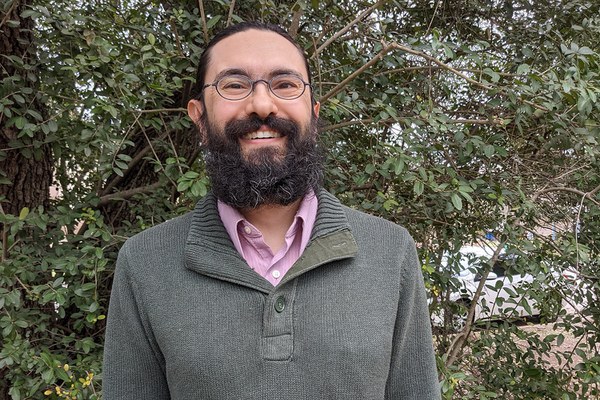Alex Neroth van Vogelpoel, PhD candidate in liturgical studies at the University of Notre Dame, is a junior fellow in Byzantine Studies. His research report, “Known in the Baking of the Bread: The Preparation of the Eucharistic Gifts in the East Syriac Tradition,” described the preparatory rites for the Eucharist in East Syriac Christianity.
Q&A with Alex Neroth van Vogelpoel
What is the significance of the Eucharist in East Syriac Christianity?
East Syriac Christianity is the Christian tradition that originated in the Persian Empire; it called itself the “Church of the East” to distinguish itself from the “Church of the West” in the Roman Empire. Syriac is the language used in the worship services, and it’s basically a Christian dialect of Aramaic. East Syriac Christians are a community of survivors: after being decimated by the Mongols in the fourteenth century and again by the Assyrian genocide in the early twentieth century, the Church of the East still exists, but of the 400,000 current members, roughly two-thirds have needed to flee the violence in the Middle East in the last few decades.
Pretty much all Christians celebrate the Eucharist as a way to remember Jesus and to make him present to the people, though the frequency and significance of the Eucharistic celebration vary across traditions. In Christian traditions that place a strong emphasis on the liturgy, Jesus is seen as becoming present in the Eucharistic bread and wine themselves; Catholics, the Orthodox Churches, and the East Syriac tradition all would say the bread and wine in some sense become the body and blood of Christ in the Eucharist. The Eucharist is the preeminent way—but by no means the only way—Christians in these traditions have contact with God; by receiving the body and blood of Christ, they literally achieve communion with God and with their fellow believers.
What is unique about the Eucharistic preparatory rites of the East Syriac tradition?
Quite a lot goes into preparing the Eucharistic gifts in the East Syriac tradition, especially the bread. One of the unique ingredients for preparing the bread in the Church of the East is the sacrament of the Holy Leaven, or Malkā, a substance that, according to the East Syriac tradition, stretches back to the apostles and is considered to be in physical continuity with Christ himself.
For every Eucharist in the Church of the East, preparing the bread involves combining the ingredients for the bread, kneading the dough, letting it rise, then adding some of the Malkā. Then the dough is shaped into loaves, stamped, and baked. This entire process, though, is not just a matter of following a recipe but is in fact a prayer service, throughout which the priest and anyone helping are praying, singing psalms, and chanting. While these activities are not unique to the East Syriac way of preparing the bread, this version of the preparatory rites is definitely one of the most complex in Christianity. It’s also a living tradition, and the same rites have been performed for centuries with only minor variations. You can go to a parish of the Church of the East today and, if the folks there let you, you can observe these rites being carried out before every celebration of the Eucharist.
What does your study add to our understanding of these East Syriac rites?
East Syriac Christianity is an understudied tradition: some scholars have discussed the Malkā and its uniqueness, but no one has studied how the bread and wine are prepared in this tradition. I am focusing on the preparatory rites themselves, exploring their origins, structure, and theological meaning through manuscripts. There are surprisingly few manuscripts that describe the preparation, though: I have found three manuscripts in total, the earliest of which is from the sixteenth or seventeenth century, which is later than we would expect. This is possibly because the rites were transmitted orally and memorized rather than being written down; something similar occurred with the rite of preparing the Eucharist in the Byzantine liturgical tradition, the Prothesis.
Here at Dumbarton Oaks, I am starting to look at how the Byzantine and East Syriac traditions interacted. The analogous rite in the Byzantine tradition, the Prothesis, has been studied much more extensively. Though the rites themselves are quite different between the Byzantine and East Syriac traditions, commentators in both traditions wrote a lot about the preparation of the Eucharist in the twelfth through fourteenth centuries, and there was a great deal of travel and exchange in the region, so it’s not implausible that the two traditions were exposed to each other’s ways of preparing the Eucharistic bread and wine. I have especially enjoyed working with Stefanos Alexopoulos, who is also a liturgical scholar but working in the Byzantine tradition. He and Emilio Bonfiglio both work on manuscripts, and Emilio is very knowledgeable about the Armenian tradition, so I have really valued their expertise.
May Wang is postgraduate writing and reporting fellow at Dumbarton Oaks. Photo by Richard Tong, postgraduate digital media fellow.

